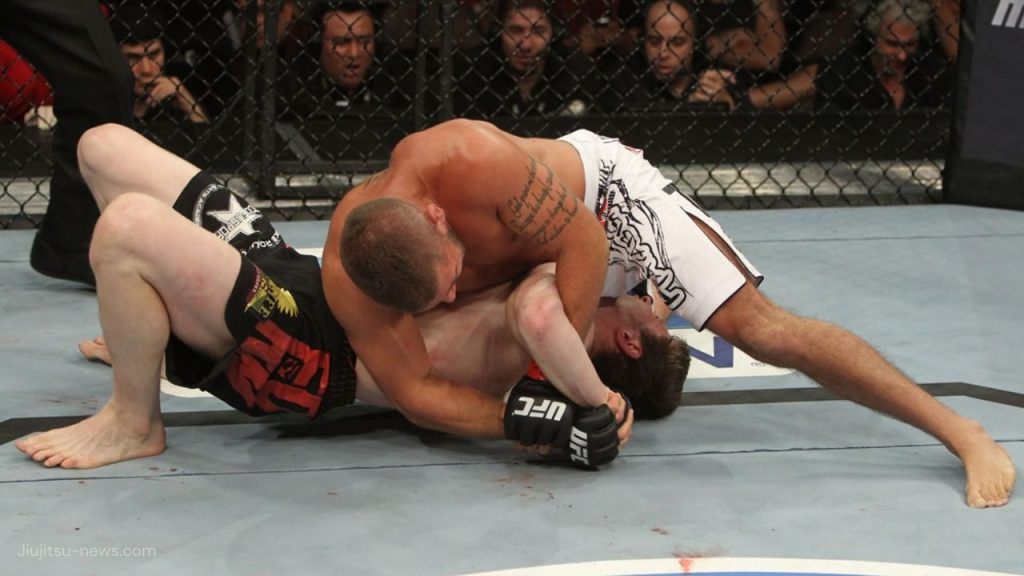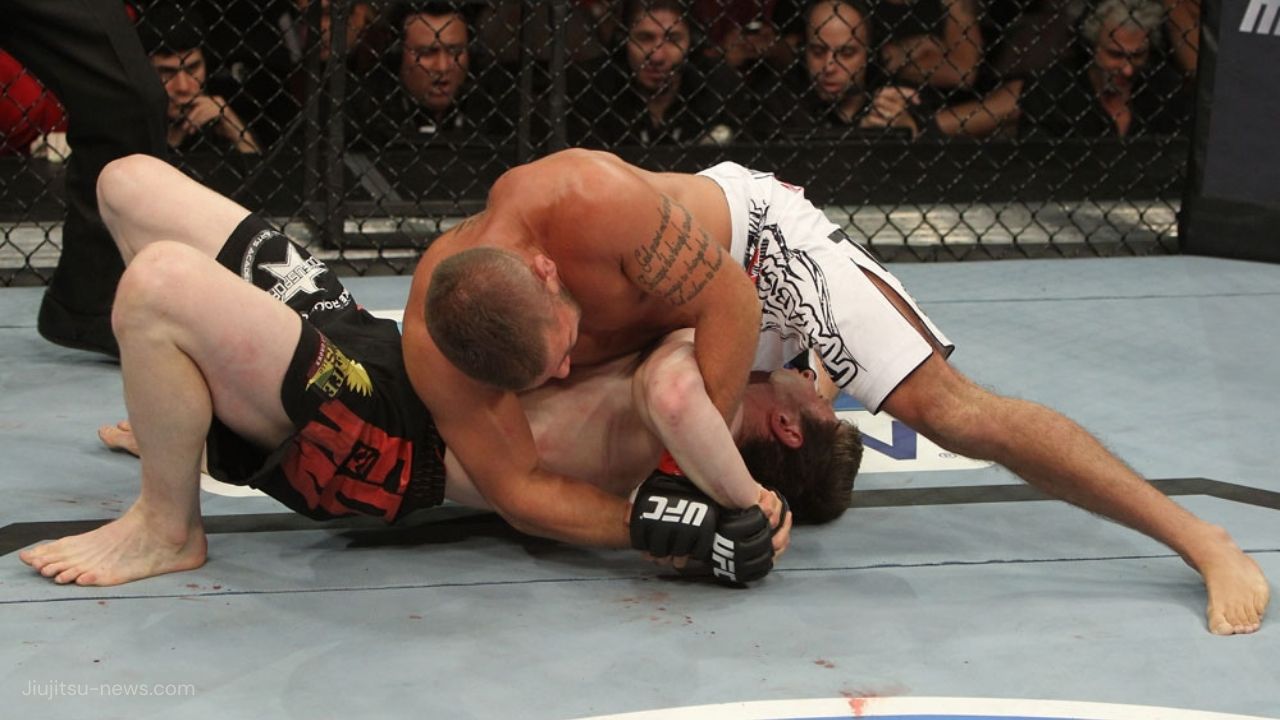In Brazilian Jiu-Jitsu, there are many good and effective submissions, such as the kimura lock, that can help you control an opponent.
One of the best moves in BJJ, MMA, and other martial arts is the Kimura. Because of this, a lot of grapplers use it all the time.
This post will go into a lot of detail about the Kimura lock, including its history, how it is used, and the different types of it. Wait for it!

Kimura Jiu Jitsu Origin
Many people in Brazilian jiu-jitsu and grappling have heard of the kimura BJJ lock since the famous match between Masahiko Kimura and Helio Gracie.
At that time, Masahiko Kimura was the best grappler and judoka in Japan. Some people think he is the best and scariest Judoka ever. And he had a great career because he only lost 4 matches.
Master Helio Gracie then asked Masahiko Kimura to fight in 1951. Masahiko did not agree to face Helio the first time, but he did agree to do so after some time.
The fight between Masahiko Kimura and Helio Gracie took place in front of 20.000 people at the Maracanã Stadium. Both fighters had a lot of energy and moved around a lot. Masahiko then came in and used a reverse ude-garami lock to break Helio’s arm while they were still fighting.
Masahiko Kimura was impressed by Helio’s will to fight and his way of thinking. Helio and Masahiko become friends after that match.
Helio Gracie named the other type of ude-garami lock the kimura lock in honor of Masahiko Kimura. In modern Brazilian Jiu-jitsu, the Kimura lock is one of the best ways to submit someone.
What Is a Kimura in Jiu Jitsu?
The Kimura Lock, which is sometimes called the “double wristlock,” is a well-known way to submit someone in grappling. This is a shoulder lock submission move that is mostly used in Brazilian jiu-jitsu, but it can also be used in Judo, grappling, MMA, and other styles.
In fact, it is a high-percentage move that works at all belt levels, as many competitors found out in the best grappling tournaments.
To do a kimura move, an attacker must use both arms against one arm of a defenseless opponent. At first glance, it seems dangerous, but it is possible if you follow these steps.
- First, you need to make sure you have the right grips. This means that one of your arms is on the opponent’s wrist and the other goes across their shoulder and deep into their arm (your arms are connected).
- Second, you can make it hard to control by putting your shoulder on top of theirs.
- Finally, move on to the next step in the kimura jiu-jitsu process, which is finishing the submission. Because of this, you need to keep the jiujitsu kimura grips on your opponent’s arm.
- Then, move quickly and violently behind your teammate’s back. In BJJ class, do this slowly so as not to hurt your partner.
Note: Make sure you move your body to the right angle so that all of your weight is on the shoulder of your opponent as you move your arms. This lets you get a quick tap without losing much power.
Jiu-Jitsu Kimura Lock Entry Positions
The Kimura is often reached from several BJJ positions like the mount, side control, closed guard, etc.
Kimura from Closed Guard
The closed guard is an essential Brazilian jiu-jitsu position that offers several submissions like the kimura; here is how?
- Pull your opponent towards you using your leg movement. Thus, you’re forcing him or her to put hands on the mat or nearby.
- Install your first grip by grabbing your opponent’s wrist of the arm you want to attack.
- Open your closed guard and make a hip escape.
- Use your free hand over your opponent’s triceps. And insert it deeply around your opponent’s arm, then connect both hands.
- Then, escape your hips towards the side of your opponent’s steady hand.
- While at your opponent’s side, connect your legs to scissor your opponent’s body. And make sure that your calf is pressed down on his or her lower back to prevent an escape.
- Finnish the kimura lock by moving the opponent’s elbow toward the head. Although, make sure to maintain solid control during the whole process.
Kimura from Half Guard
The half guard is another suitable position to get the kimura lock technique, here is how?
- First, you need to manage the distance and frame your opponent. Don’t let him or her smashes you.
- Then, use your legs and hands to put your opponent out of balance. Likewise, go for a sweep set to force him or her to put their hand on the mat.
- Thrive the opportunity and grab your opponent’s wrist of the hand on the mat.
- Use your free hand over your opponent’s triceps. And insert it deeply around your opponent’s arm, then connect both hands.
- Then, escape your hips towards the side to install the kimura trap grips.
- After that, you have several options to finish the kimura.
Need more help!
In the following video, Lachlan Giles demonstrates the kimura submissions from half-guard in no-gi jiu-jitsu.
The side control is another suitable position to get the kimura lock; here is how?
- Be a proactive BJJ player in the side control. Use the action-reaction principle to drive your opponent to extend his or her hand to defend some BJJ moves like the knee on belly.
- Then, you need to adjust your knees position and finish the kimura. There are many variations in finishing the side control kimura lock, tough.
- Then, grab and isolate the opponent’s hand.
- Then, install your kimura trap grip while maintaining a good weight pressure on your opponent.
- Finish the kimura submission moves.
Need more help!
The following video teaches you how to do the kimura perfectly from the side control position.
Kimura Lock from Mount Position
The BJJ mount is another suitable position to submit your opponent using a kimura technique; here is how?
- After achieving the full mount position, you must side forward on the opponent’s body.
- Here you force your opponent to defend using his or her hands. So, you should seize the opportunity to grip and isolate one of the opponent’s arms.
- Then install the jiujitsu kimura grip.
- To finish the kimura submission, lean your upper body forward and pull your knees toward your shoulders. But you should keep your center of gravity low. There are many ways to finish the kimura from that position, though.
Need more help! The following video teaches how to do kimura from mount.
Conclusion
The Kimura is a powerful and adaptable submission technique in Brazilian jiu-jitsu, MMA, etc. It is a strict and tight control that may be used from various positions, including side control, closed guard, mount, etc.
A kimura hold may give you good leverage to control your opponent and open up transitions and/or other attacks, sweeps, and awesome transitions.
Whether a novice or an experienced grappler, you should add this formidable technique to your grappling arsenal by studying its history, usage, variants, and countermeasures.
Related: The triangle choke is one of the most excellent attacks you should add to your BJJ arsenal. This firm chokehold is a must-know for any serious practitioner. Click here to learn more!



